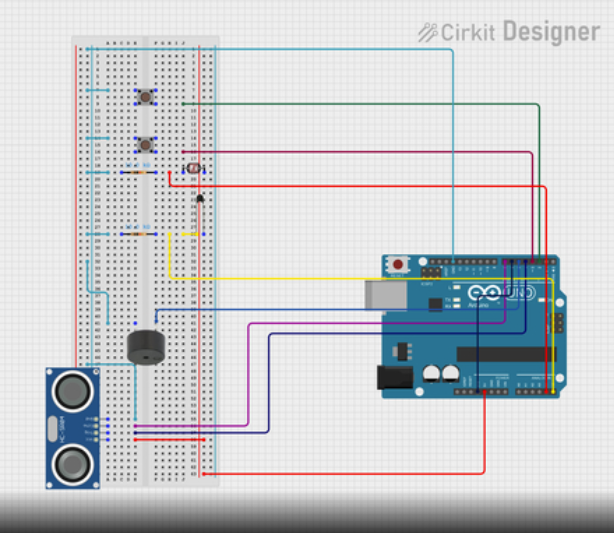Arduino Uno Light-Sensing Alarm Clock
Problem / Motivation
As part of my embedded systems coursework, I wanted to explore real-time system design that integrates multiple hardware peripherals simultaneously. I designed a fully embedded light-sensing alarm clock using the Arduino Uno platform and low-level AVR C programming (without Arduino libraries). The system activates based on ambient light levels and allows for user interaction using a sonar sensor to silence the alarm via hand wave detection.
This project allowed me to deepen my experience with ADC, timers, input capture, analog comparators, and USART communication — building a fully interrupt-driven embedded application from the ground up.
System Architecture
- Light Sensing: Analog light sensor connected to the ADC continuously monitors ambient light levels.
- Alarm Activation: When the light threshold is crossed (e.g. sunrise), the system triggers a buzzer alarm.
- Sonar Silencing: Ultrasonic distance sensor measures hand proximity; waving a hand within range disables the alarm.
- Input Capture: Timer1 Input Capture used to measure sonar echo pulse duration with microsecond precision.
- Analog Comparator: Provides reliable threshold detection for light activation.
- USART Debugging: Serial output used for real-time system debugging and data logging during development.
Key Technical Challenges
- Synchronizing ADC sampling with real-time alarm triggering.
- Using Timer1 Input Capture for precise sonar distance measurement.
- Handling noisy sonar measurements and filtering out false triggers.
- Fully interrupt-driven architecture to ensure accurate, non-blocking sensor readings.
- Writing modular AVR C code without relying on Arduino’s higher-level libraries.
- Calibrating both light and sonar sensors to operate reliably across varying environmental conditions.
Future Work & Expansion
- Add user-configurable light sensitivity thresholds via onboard buttons or serial commands.
- Integrate an RTC (Real-Time Clock) module to combine scheduled alarm with light sensing.
- Implement a low-power sleep mode for energy efficiency.
- Add an LCD display to show time, light levels, and sonar distance.
Technologies Used
AVR C, Arduino Uno, Timer1 Input Capture, Analog Comparator, ADC, USART, Ultrasonic Sonar, Embedded Systems, Interrupt-Driven Programming, Sensor Fusion
